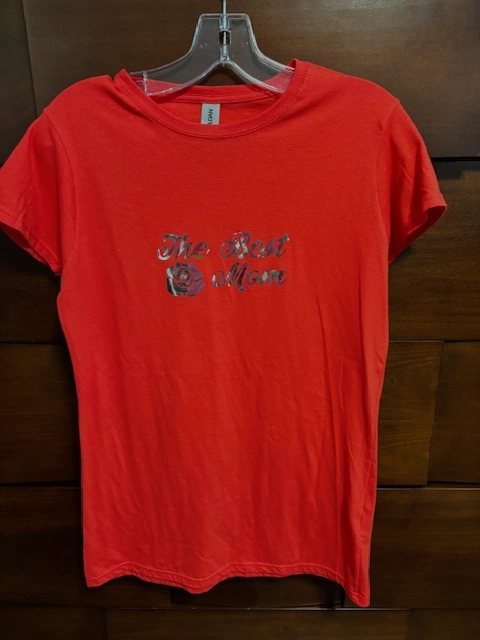Sophisticated Monogramming on Towels for a Touch of Deluxe
Sophisticated Monogramming on Towels for a Touch of Deluxe
Blog Article
The Art of Personalized Embroidery: Opening the Tricks to Creating Unique and Memorable Layouts
Needlework, a craft soaked in custom and artistry, holds within its detailed stitches the power to transform textile right into a canvas of one-of-a-kind expression. The secrets to developing custom embroidery layouts that astound the eye and leave a long-term perception depend on a fragile equilibrium of method, imagination, and interest to information. As we explore the world of personalized needlework, we discover the nuanced interplay in between thread selection, stitch complexity, and style customization that raises a simple garment to a job of art. Join us on a trip with the art of custom-made embroidery as we unravel the mysteries behind crafting really extraordinary and distinctive developments.
Picking the Right Needlework Threads
When choosing embroidery threads, what key elements should you take into consideration to make certain the finest outcomes for your custom designs? The option of embroidery string is crucial in figuring out the last outcome of your stitched style.
Furthermore, the weight or thickness of the thread plays a substantial role in the look of the needlework. Thicker threads can include measurement and structure to your layout, while finer strings are excellent for elaborate details and tiny text. In addition, taking into consideration the shade fastness and washability of the thread is essential to make sure that your custom styles preserve their top quality and vibrancy with time. By carefully reviewing these aspects and selecting high-grade strings that fulfill your particular requirements, you can improve the aesthetic allure and long life of your stitched developments.
Discovering Different Stitch Techniques
To dive into the realm of 'Discovering Different Stitch Strategies', one should grasp the ins and outs and nuances that each stitching method offers the art of embroidery. Various stitch techniques not only include aesthetic passion but additionally add to the total structure and measurement of the design. One popular stitch method is the satin stitch, which entails very closely stuffed parallel stitches to create a smooth and glossy surface, suitable for completing shapes and producing vibrant details.
On the various other hand, the backstitch is a flexible strategy typically made use of for describing and including fine information. It involves sewing backward to develop a solid line of needlework. In addition, the French knot stitch includes a responsive element to styles, best for developing distinctive accents like flower centers or attractive touches.
Checking out various stitch techniques permits embroiderers to have fun with light, darkness, and deepness within their layouts, raising the visual appeal and artistic quality of their embroidery projects. By grasping different sewing approaches, one can unlock endless opportunities for creating one-of-a-kind and remarkable custom-made needlework items.
Incorporating Personalized Layout Elements
Having explored the complexities of various stitch techniques such as the satin stitch, backstitch, and French knot, the emphasis currently changes towards integrating individualized style components in custom-made embroidery tasks. Personalized layout aspects play an essential function in making embroidery projects really one-of-a-kind and memorable.
An additional way to integrate tailored layout aspects is by consisting of signs or concepts that hold unique meaning to the recipient or show their rate of interests and individuality. For example, incorporating a favored flower, animal, or hobby-related symbol can make the embroidery design much more purposeful and individualized. Furthermore, choosing shades that resonate with the recipient or custom slim fit suits straighten with the desired style can better boost the personalization of the needlework task.
Understanding the Art of Shade Control
One secret facet of shade coordination is understanding color theory. This consists of knowing exactly how different shades communicate with each various other, the feelings they share, and how they can be incorporated to produce visually enticing layouts. By applying shade concept concepts, embroiderers can create harmonious color schemes that boost the overall look of the design.
Additionally, paying interest to comparison is crucial in shade sychronisation. Making use of contrasting colors can help particular aspects of the design pop, enhance legibility, and create an aesthetically vibrant needlework piece. By understanding the art of color sychronisation, embroiderers can boost their styles and produce remarkable items that resonate with customers and customers alike.
Enhancing Structure With Advanced Needlework Stitches

French knots, for instance, are excellent for adding tiny, increased dots to your design, imitating the look of beads or producing a distinctive surface. Bullion knots, on the other hand, can be used to produce twisted, ropelike components that add an extravagant feel to the embroidery. Seed sewing entails little, scattered stitches that can fill in locations with a speckled structure, while turkey work develops fluffy, dimensional accents similar to animal hair or vegetation. Experimenting with these advanced needlework anchor stitches allows you to press the limits of conventional needlework and develop really distinct and aesthetically attractive appearances in your designs.
Conclusion
In conclusion, the art of custom-made needlework involves a mix of selecting the appropriate threads, exploring different stitch techniques, incorporating tailored design aspects, understanding color sychronisation, and improving texture with innovative stitches. By comprehending and applying these vital aspects, embroiderers can produce special and remarkable layouts that showcase their imagination and skill. Embroidery lovers can open the secrets to producing stunning and custom items that attract attention and leave a long-term perception.
Report this page